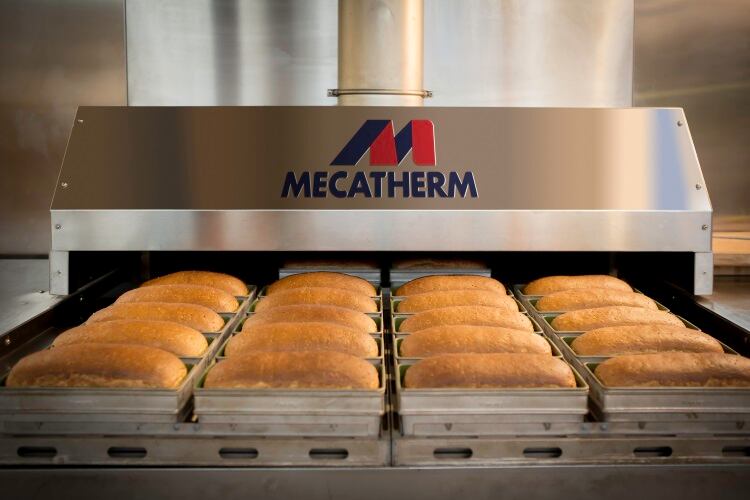Industrial bakers have grasped it completely with the number of products with ‘natural’ claims increasing and representing 34% of NPD launched last year in Europe.
Bakery lines from make-up to packaging create two main challenges, product quality and industrial performance. However, in industrial baking, chemical improvers are often used as regulators to make products more tolerant to process time fluctuations, improve control of downtimes, and they have become the way to increase quality and performance.
If chemical improvers cannot be used, the clean label trend inevitably pushes manufacturers to find innovative ways to address these challenges. Alternative natural ingredients do exist, but they too present their own challenges and require total knowledge of every process step. Solutions include working with a more natural, more hydrated (from 68%-75%) and visco-elastic dough. These rheological properties of course make the dough less machineable, leading industrialists to rethink the production process. The best way to meet the challenges if ingredient upgrades and recipe simplification are ruled out, is to use smart equipment.
Division and moulding
Today, most division technologies work with dough that is quite hard: the dough is stretched, compressed and sheared. Healthy products require more natural dough, bringing the necessity for a new generation of equipment.
Authentic bread quality starts with dividing which ensures high quality products without any mechanical action on the dough to produce an authentic product with the taste and shelf-life matching market demand.
Connected to a moulder, the new generation of divider M-NS developed by Mecatherm measures and adjusts in real time to the dough density to guarantee the weight and ideal shaping consistency of the dough piece to feed the moulder. Benefits include limited flouring, increased volume, long shelf life, improved taste, high hydration, and freshness of the crumb. This equipment is also provided with user friendly HMI and self-monitoring equipment.
Proofing
Following division and moulding, products go through the final proofer. At the end of this stage, the dough is still raw and takes volume. It is a delicate stage: its glutinous network traps the gases produced by the yeasts, enabling the dough to swell and ferment forming alveoli and its fluffy properties. It is important that the products do not deteriorate and so it is critical that all mechanical movements are managed during the conveying of the products.
To ensure this, chemical improvers used to be added to the recipe to make the dough more tolerant to any sharp movement generated by a mechanized process.
Now, newest technologies allow to control much more precisely every mechanical movement. This is why Mecatherm has developed a new handling mechanical system: the M-UB. This innovative mechanical design allows products to be conveyed smoothly, switching from ascending to descending stacks without a pusher system. This is combined with perfect management of speed control, especially in the acceleration and deceleration phases.
Baking
Baking parameters have a strong impact on the quality and characteristics of the clean label products: it is a very complex operation in which numerous physicochemical changes take place.
These transform the product including volume increase, weight decrease, internal structure such as crumb structure, softness and resilience and the external aspects such as crust thickness, coloration, and gloss. All these changes do have a strong impact on product residual humidity and thus its shelf life.
Defining an ideal ‘baking profile’ for each product is therefore crucial in obtaining the quality desired by the consumer. The elimination of chemical improvers in clean label products makes this goal even more difficult.
The solution lies in fine control of the baking parameters. Using different combinations of heat transfer can control these, namely conduction, convection and radiation. Precise control is required in selecting the heat transfer modes; in adjusting the intensity of heat transmitted to the product; and in managing steam injection and extraction inside the baking chamber.
Without improvers, it is a real challenge to achieve quality and consistent clean label products. Mecatherm’s M-TA Oven can bake a wide range of products while exactly meeting the quality criteria required. It is also easy to maintain and control and can bake premium artisan bread and a wide range of crusty bread and clean label products.
Cooling
Between the stages of baking and packaging – i.e. during cooling – the dough can easily deteriorate, as the temperature is ideal for bacteria activity. Hygiene is crucial and without chemical preservatives, the risk of mould growth due to an external contamination is extremely high.
An alternative to preservatives is to set-up a clean air area from the oven exit to the packaging area, in which a ‘cold trays circuit’ can be implemented. This innovative solution combines mechanical isolation of the cooling circuit from the baking circuit, and the use of dedicated cooling grills allowing the products to rest on an adapted and easy-to-clean surface.
To limit downtime caused by changeovers or unexpected shutdowns, buffers can also be implemented in the cooling area. This extension of cooling capacity can store products in case of slowdowns or failure, isolating and protecting the products. This will help avoid product losses and ensure better industrial performance.
Consequently, the strategy of flexible lines must combine quality, performance and security.
“All these issues are important, complicating investment decisions,” said Olivier Sergent, present of Mecatherm.
“As a supplier, equipment must be flexible and scalable with guaranteed durability. Beyond the product itself, additional constraints will emerge involving packaging, bake-off at the point of sale and traceability.
“Of course, the tremendous evolution of e-commerce will certainly ensure distribution evolves,” he added.


